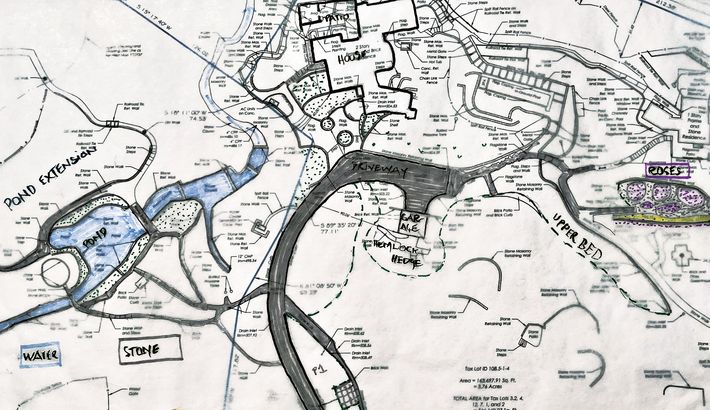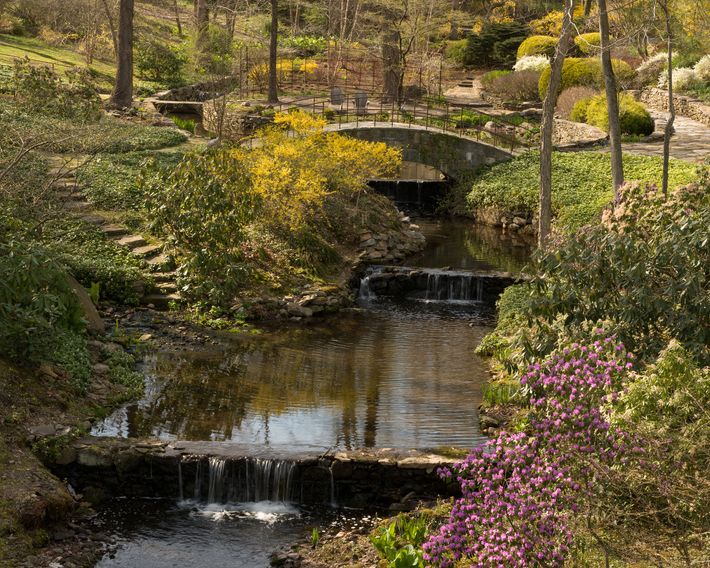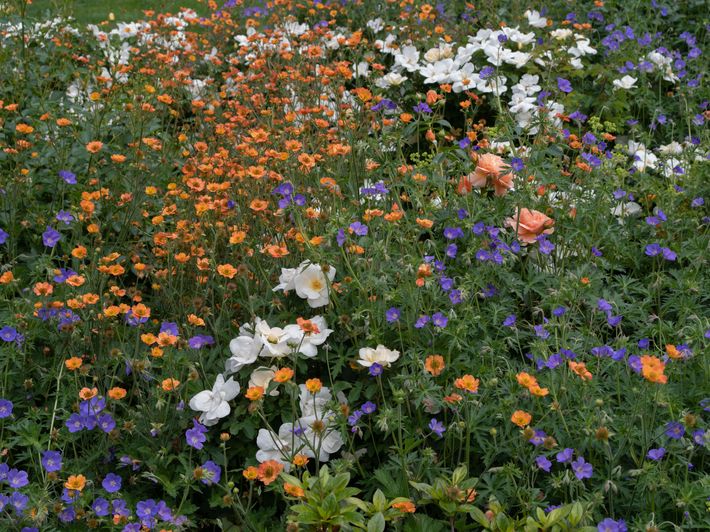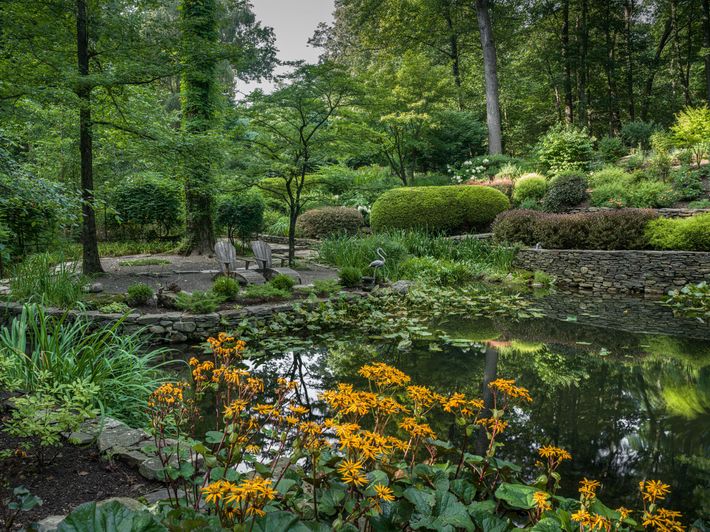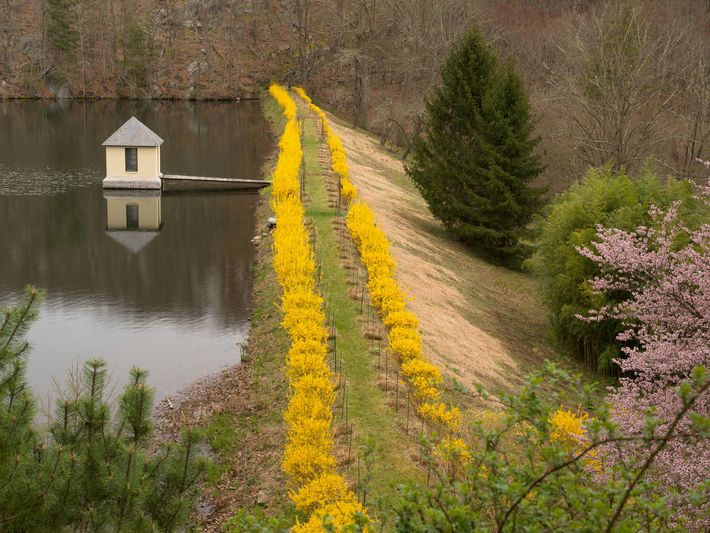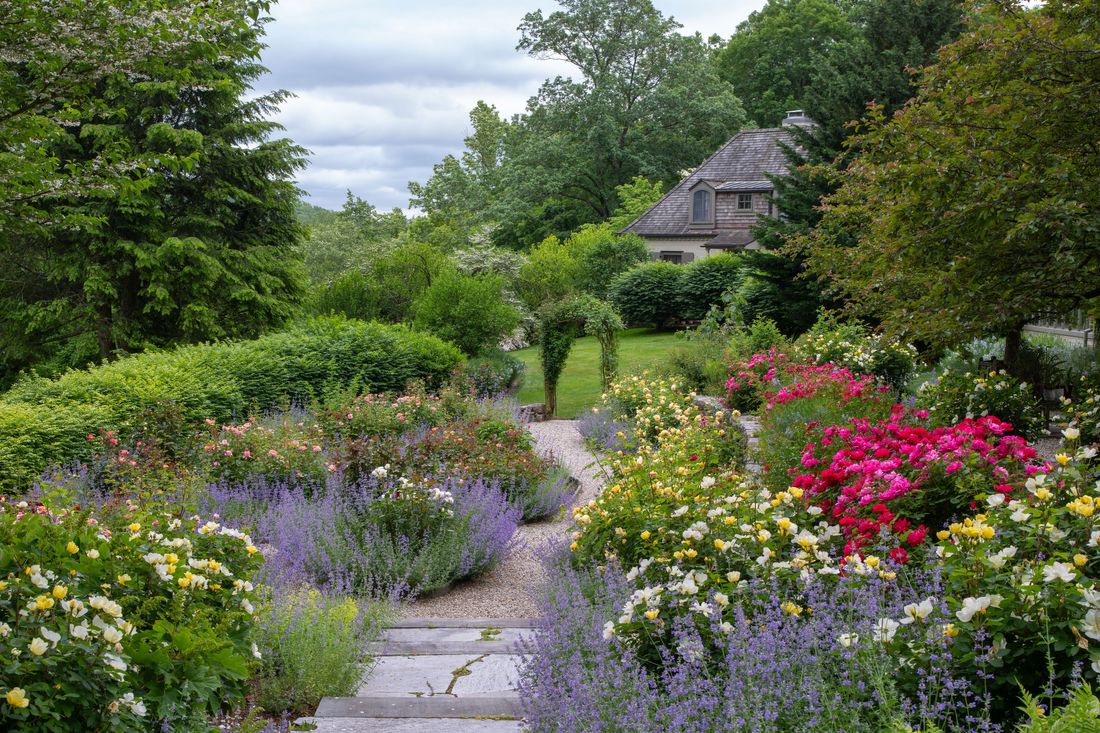
In 1992, Larry Lederman, a lawyer in New York, and his wife, the interior designer Kitty Hawks, bought a small house in Chappaqua on four wooded acres overlooking a nine-acre former reservoir. “We were drawn to the enormous oak trees lining one side of the driveway,” Hawks says, “as well as two huge maple trees and a very old apple tree on the lawn.” They also loved that the property had lots of rock outcroppings. They nicknamed it the Hawks Nest.
They hired David Piscuskas from 1100 Architects to expand the house upward to take better advantage of the views. After it was finished, Lederman asked Hawks to stand with him and tell him what she saw. “I see the house,” she said. He asked, “Where is the garden?” Hawks looked at him and started to laugh, answering, “I hate you,” knowing what they were in for.
Early on, Hawks planted miscanthus grass atop the reservoir’s dam; it grows up to six feet and flowers in the fall. After a few years, she planted two rows of forsythia between the grasses so there would be flowers in the spring. The landscaping and garden projects have evolved over the years after that.
“This is Mr. Blandings Builds His Dream House,” Lederman says, referencing the 1948 home-renovation comedy starring Cary Grant and Myrna Loy. There was a lot of trial, error, and experimentation. “I studied the work of my favorite landscape designers—Gertrude Jekyll, Piet Oudolf, Jacques Wirtz, and Tom Stuart Smith—as well as Japanese gardens,” Hawks says. “Plenty of mistakes have been made and rectified. Doing is the best way of learning.” From the beginning, they were aided in this by the skills and talent of landscaper Oscar Sandoval.
Five years in, a six-acre plot of land next door became available. Mostly “it was a bog and brambles,” Lederman says. “You could not walk through it, and there was a little stream and hidden pond, which you really couldn’t do very much with.” They set out clearing the forest brambles, and he asked Sandoval to build low stone barriers intermittently along the stream, which widened it and created a series of waterfalls that feed the pond and go down to the reservoir. Hawks then “planted pachysandra because we knew it would spread fast and hold the soil, so there are carpets of it everywhere.”
Once the pond was cleaned, Sandoval and his team built a stone bridge at one end, creating another route between the six new acres and the original four, adding to the romantic landscape.
In 2011, yet another adjacent property became available; it included a small 1937 house, which is now used for guests. The most recent project was the creation of a rose garden in a sunny spot near the guesthouse.
Lederman says the garden changed his life. “I was a lawyer, and when I bought the house, I didn’t own a camera. In 2000, I bought my first camera to photograph the trees.” Lederman, whose photographs of the Hawks Nest are on these pages, has published seven photography books to date, including two on the New York Botanical Garden and one on Du Pont Gardens of the Brandywine Valley from The Monacelli Press.
More Great Rooms
- Keeping It Simple on Lower Fifth
- Artist Vivian Reiss’s Murray Hill House of Whimsy
- Ryan Lawson Lives Above His Favorite Italian Restaurant



